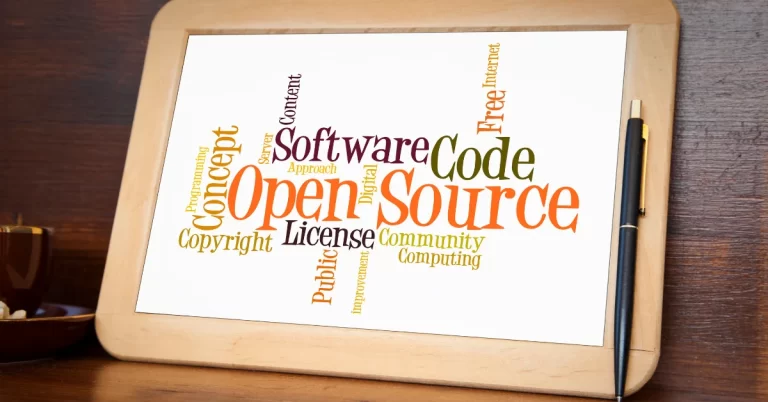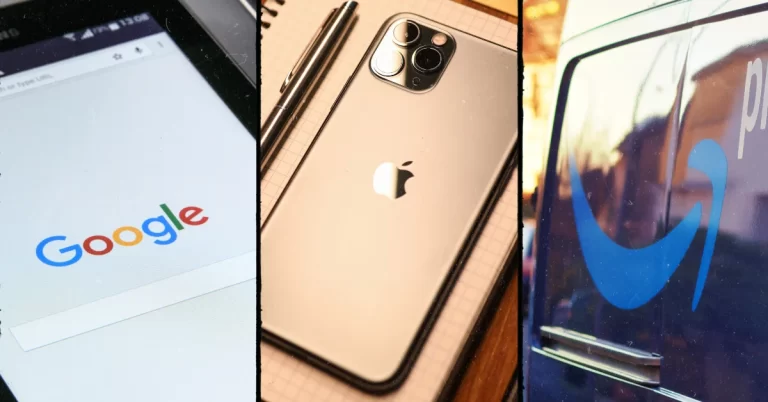Collaborative Innovation: How Standard Essential Patents Work
Imagine trying to send a text message if every phone manufacturer used completely different technology. Or plugging your laptop into an outlet that doesn’t match your charger. Sounds frustrating, right? This is why we have technology standards—agreed-upon ways that devices and systems work together.
But here’s where things get interesting: many of these standards rely on patented technologies. When a patented technology becomes essential to a standard, it creates what we call a “Standard Essential Patent” or SEP. These special patents sit at the fascinating intersection of collaboration and competition in the tech world.
As someone who has helped companies navigate patent strategies for years, I’ve seen firsthand how standard essential patents shape our technological landscape. Let’s explore how they work and why they matter.
What Makes a Patent “Standard Essential”?
To understand standard essential patents, we first need to understand technology standards.
A technology standard is basically an agreement about how certain technologies should work so that different products can operate together seamlessly. Think of standards like USB, Wi-Fi, 5G, Bluetooth, or video formats like HEVC.
Now, here’s the key point: To implement these standards, companies often need to use specific technologies that are protected by patents. When a patent covers technology that’s absolutely necessary to implement a standard, it becomes a “standard essential patent.”
Let me share a real example I encountered: A mid-sized tech company developed an innovative way to compress video that made streaming much more efficient. When this technique became part of the new video streaming standard, their patent suddenly became essential for anyone wanting to implement that standard. Overnight, their patent went from valuable to absolutely critical.
The Standards-Setting Process: How SEPs Are Born
Standards don’t just appear out of nowhere. They’re created through a careful process involving many companies working together in organizations called Standard Setting Organizations (SSOs) or Standard Development Organizations (SDOs).
Some well-known SSOs include:
- IEEE (Institute of Electrical and Electronics Engineers)
- ETSI (European Telecommunications Standards Institute)
- ITU (International Telecommunication Union)
- W3C (World Wide Web Consortium)
Here’s how the process typically works:
- Industry Identifies a Need: Companies recognize the need for a common standard (like faster wireless communication).
- Working Groups Form: Engineers and technical experts from different companies join working groups to develop the standard.
- Technology Proposals: Companies propose technologies for inclusion in the standard, often including their patented technologies.
- Evaluation and Selection: The group evaluates different approaches and selects the best technologies for the standard.
- Patent Declarations: Companies declare any patents they believe are essential to implementing the standard.
- Standard Publication: The final standard is published for implementation.
During this process, companies often compete to have their patented technologies included in the standard. Why? Because if your patented technology becomes part of a standard, every company implementing that standard will need to use your technology.
I once observed a standards meeting where representatives from three competing companies each argued passionately for their approach to be adopted. The tension was palpable—each knew that getting their technology into the standard could mean millions in future licensing revenue.
The FRAND Commitment: Keeping Things Fair
Here’s where an interesting challenge emerges: If a company’s patent becomes essential to a standard, they could potentially block others from implementing the standard or charge excessive fees. This would defeat the whole purpose of having an open, widely-adopted standard.
To address this concern, most standards organizations require patent holders to agree to license their standard essential patents on FRAND terms:
- Fair
- Reasonable
- And
- Non-Discriminatory
This FRAND commitment is a crucial bargain: in exchange for having their technology included in the standard, patent holders agree to license it to anyone implementing the standard on fair terms.
What exactly constitutes “fair and reasonable” is often debated, but the key principle is that SEP holders shouldn’t abuse their position by charging excessive royalties or refusing to license their patents.
The Smartphone Wars: SEPs in Action
Perhaps the most famous example of standard essential patents in action is the global smartphone patent wars that erupted in the 2010s.
Smartphones rely on hundreds of standards—from cellular communications (3G, 4G, 5G) to Wi-Fi, Bluetooth, video codecs, and more. Each of these standards involves numerous SEPs owned by different companies.
Major players like Apple, Samsung, Google, Qualcomm, Ericsson, Nokia, and many others found themselves in epic legal battles over these patents. The disputes centered around questions like:
- What constitutes a FRAND royalty rate?
- Can a company seek an injunction (block the sale of products) based on SEPs?
- How should royalties be calculated—based on the entire product or just the component using the patented technology?
One particularly noteworthy case involved Apple and Samsung, which fought over patents in courts across multiple continents. While many of these disputes involved regular patents, SEPs played a crucial role, with billions of dollars at stake.
Through these battles, courts around the world began establishing clearer rules about how standard essential patents should be licensed and enforced.
The Tension at the Heart of SEPs
Standard essential patents highlight a fundamental tension in technology development:
On one hand, patents give inventors exclusive rights to their inventions, incentivizing innovation. On the other hand, technology standards require widespread access to create compatible, interoperable products.
SEPs and FRAND licensing try to balance these competing interests—rewarding innovation while enabling broad adoption of standards.
This tension was perfectly illustrated in a situation I encountered with a client who had developed a breakthrough wireless technology. They faced a difficult choice: keep the technology proprietary and potentially earn higher margins on their own products, or contribute it to a standard and earn royalties from a much larger market. After much debate, they chose the standards route, believing that wider adoption would ultimately be more valuable than exclusivity.
How Companies Navigate the SEP Landscape
Companies take different approaches to standard essential patents based on their business models:
Technology Developers
Companies that focus on R&D and developing new technologies often have strong incentives to contribute their innovations to standards. They can then generate revenue by licensing their SEPs to implementers.
Example: Qualcomm has thousands of patents essential to cellular standards. While they make some hardware, a significant portion of their revenue comes from licensing these patents to smartphone manufacturers.
Product Manufacturers
Companies that primarily make products need access to standards to create competitive offerings. They focus on securing licenses to necessary SEPs while managing costs.
Example: A computer manufacturer needs to implement Wi-Fi in its laptops. They must obtain licenses to the SEPs covering Wi-Fi technology.
Hybrid Approaches
Many companies both contribute to standards and implement them, creating a complex dynamic where they simultaneously license their SEPs to others while licensing SEPs from competitors.
Example: Samsung both holds many SEPs that it licenses to others and pays licenses to use SEPs owned by companies like Ericsson and Nokia.
SEP Licensing Models: How the Money Flows
Several approaches have emerged for licensing standard essential patents:
Bilateral Licensing
The traditional approach involves one-on-one negotiations between the SEP holder and each company implementing the standard. This can be efficient when few companies are involved but becomes unwieldy with widely adopted standards.
Patent Pools
To simplify licensing, companies sometimes create patent pools—organizations that collect SEPs from multiple patent holders and offer unified licenses. This creates a “one-stop shop” for implementers.
Example: The MPEG LA pool offers licenses to patents essential to various video coding standards, with revenue shared among the patent holders based on agreed formulas.
Defensive Patent Aggregators
Some organizations acquire SEPs defensively to protect their members from potential litigation.
Example: Avanci offers simplified licensing of cellular SEPs for IoT devices and connected vehicles, with participating SEP holders agreeing to license their patents through this platform.
Global Variations: SEPs Around the World
The treatment of standard essential patents varies significantly across different legal systems:
United States: Courts have generally been reluctant to grant injunctions for SEP infringement, instead favoring monetary damages consistent with FRAND rates.
European Union: The EU has developed a relatively balanced framework, allowing injunctions in certain circumstances while emphasizing the importance of good-faith negotiations.
China: China has become increasingly important in SEP disputes, with courts sometimes setting global FRAND rates and issuing “anti-suit injunctions” that prevent litigation in other countries.
United Kingdom: UK courts have established themselves as willing to set global FRAND terms for SEP licenses.
These variations create a complex global landscape for companies to navigate, often leading to parallel litigation in multiple countries over the same patents.
The Future of SEPs: New Frontiers
As technology continues to evolve, several trends are shaping the future of standard essential patents:
The Internet of Things (IoT) Explosion
The rapidly expanding IoT ecosystem is creating new challenges for SEP licensing. Instead of a relatively small number of smartphone manufacturers, standards like 5G now apply to potentially billions of connected devices made by thousands of manufacturers across numerous industries.
How can SEP licensing models adapt to this new reality? Some patent holders are developing industry-specific licensing programs with different rates for different applications of the same standards.
Open Standards Movement
There’s a growing push toward more open standards with fewer patent restrictions. Organizations like the Open Innovation Network are promoting patent non-aggression in certain technology areas.
AI and Standards
As artificial intelligence becomes increasingly important, standards are emerging for AI systems, interfaces, and data formats. This creates new frontiers for standard essential patents in areas like machine learning models and AI safety protocols.
Automotive and Mobility
Connected and autonomous vehicles rely heavily on standardized technologies, from cellular connectivity to position location. This has led to significant new SEP licensing activity in the automotive sector, sometimes creating friction between traditional auto manufacturers and technology companies.
Practical Impacts: Why SEPs Matter to Everyone
Standard essential patents might seem like a niche legal topic, but they affect nearly every aspect of our technological lives:
For Consumers
SEPs and their licensing directly impact:
- The cost of your devices (licensing fees get passed on to consumers)
- The availability of new technologies
- How well different products work together
For Innovators and Startups
For those developing new technologies:
- Access to standards can be critical for market entry
- SEP licensing costs can impact business models
- Contributing to standards can provide licensing revenue and influence future technology
For Society
On a broader scale, SEPs affect:
- The pace of technology adoption
- Who benefits financially from innovation
- Global technology competition and cooperation
Finding Balance: The Path Forward
The ideal SEP system balances several important goals:
- Rewarding Innovation: Ensuring companies that develop breakthrough technologies receive fair compensation
- Enabling Adoption: Making standards accessible so they can be widely implemented
- Preventing Abuse: Discouraging excessive royalties or anti-competitive behavior
- Providing Certainty: Creating predictable rules so companies can make business decisions with confidence
While perfect balance may be elusive, ongoing refinements to SEP policies, licensing practices, and legal frameworks continue to improve the system.
Conclusion: The Collaborative Competition
Standard essential patents represent a fascinating paradox in the technology world: fierce competitors coming together to establish common standards, then navigating complex licensing relationships to implement them.
Despite the occasional high-profile disputes, the SEP system has largely succeeded in its primary goal—enabling the development of interoperable technologies that benefit billions of people worldwide. From the smartphone in your pocket to the Wi-Fi connecting your devices, standard essential patents have played a crucial role in creating our connected world.
As technology continues to evolve and new standards emerge, the SEP landscape will continue to develop. Understanding how these important patents work helps us appreciate the delicate balance between cooperation and competition that drives technological progress.
As a patent agent with experience in both technology development and intellectual property, I’ve helped many clients navigate the complex world of standard essential patents. While this article provides general guidance, each situation involves unique considerations. For specific advice about your technology and patent strategy, consult with a registered patent attorney or agent experienced in this specialized field.






